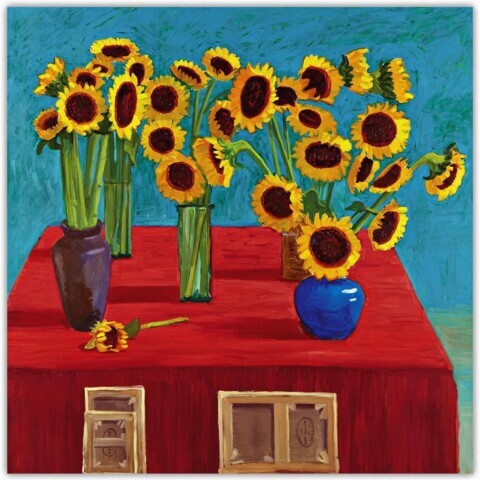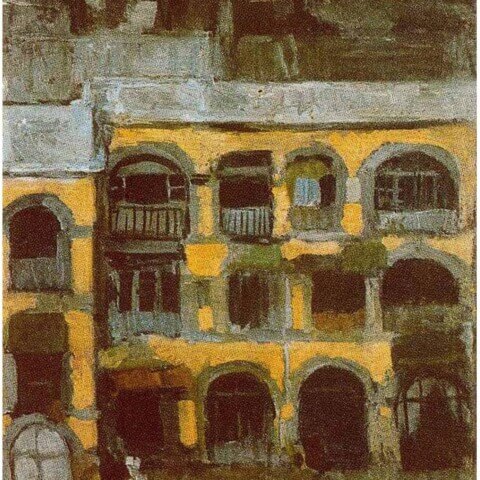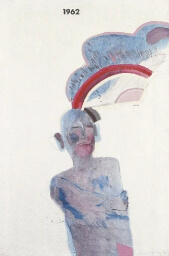Title: “”James Rosenquist’s Gift Wrapped Doll IV: A 1976 Icon of Consumerism””
Year Painted: 1976
Crafted in 1976, James Rosenquist’s “”Gift Wrapped Doll IV”” stands as a profound embodiment of pop art’s socio-cultural critique. This masterpiece intricately interweaves fragmented imagery to explore the nexus between consumerism and individual identity, resonating with audiences then and now.
The year 1976 marked a cultural crossroads, and “”Gift Wrapped Doll IV”” captures this zeitgeist with remarkable acuity. As consumerism surged, Rosenquist’s canvas served as a mirror, reflecting the allure and pitfalls of a materialistic world. The fragmented composition compels viewers to confront the commodification of identity, questioning how products shape perceptions of self.
Rosenquist’s technical brilliance is apparent in the meticulous arrangement of images. Each fragment, carefully juxtaposed, forms a larger narrative of consumption and manufactured desire. This storytelling prowess allows the painting to communicate not only visually but also conceptually, sparking contemplation on the interplay between media, commodities, and the human psyche.
“”Gift Wrapped Doll IV”” transcends mere critique; it ignites introspection. By invoking the iconic imagery of the doll, a symbol of innocence, encased in consumer packaging, Rosenquist encourages viewers to ponder the effects of mass media on personal aspirations. The painting becomes a portal into a labyrinth of questions about identity, values, and societal influence.
Amidst the vibrant colors and complex forms, the painting’s enduring relevance is striking. In a world increasingly defined by consumer culture and media saturation, “”Gift Wrapped Doll IV”” retains its power to evoke dialogue. The title itself becomes a keyword for contemplating the commodification of childhood innocence and the complexities of adulthood.
In conclusion, “”Gift Wrapped Doll IV”” is not just a painting; it’s a mirror reflecting the cultural dynamics of its time and an enduring conversation starter. Painted in 1976, it retains its significance as a commentary on consumerism’s influence on identity and remains a hallmark of Rosenquist’s legacy. The painting invites viewers to peel back the layers of materialism and media and confront the essence of individuality amidst the cacophony of consumption.
At our art gallery, we take pride in offering comprehensive global shipping to our esteemed clientele. We understand the significance of your art acquisitions and the need to transport them with utmost care. Hence, we are committed to delivering your chosen paintings to any address worldwide and free of any additional charge.
Our reliable courier service partners are experienced in handling precious art pieces and ensure that your painting reaches you in pristine condition. We offer fully insured, door-to-door delivery, providing you with peace of mind that your artwork is protected during transit.
Moreover, to accommodate your unique framing preferences, we offer the distinctive service of sending your purchased artwork directly to any framer across the globe. This enables you to have your painting framed locally by your trusted framer, reducing the risk of damage during transportation.
Regardless of your location or your framer’s, we strive to make the process as seamless as possible. It is our goal to provide exceptional service that caters to your needs and ensures the safe delivery of your valuable artwork.
We invite you to experience our hassle-free, worldwide shipping service, which is aimed at delivering your prized art pieces safely and efficiently, wherever you may be.
Similar paintings
Join our newsletter
Signup for our newsletter and receive our inspiration guide and 20% discount on your first order!









